Roy Harper | ||
| Allmusic Biography : An idiosyncratic British singer/songwriter acclaimed for his deeply personal, poetic lyrics and unique guitar work, Roy Harper was born June 12, 1941, in Manchester, England. As a teen he tenured with De Boys, his brothers skiffle band, before leaving home at the age of 15 to enter the Royal Air Force; he subsequently secured a discharge by faking insanity, resulting in a short stay in a mental institution (where he was the subject of an ECT treatment). His rebellious attitude eventually led to him spending a few months in prison. Harper later drifted throughout Europe, and by 1965 was a mainstay of Londons Les Cousins folk club, performing alongside the likes of Paul Simon, Joni Mitchell, and Nick Drake. In 1966, the tiny indie label Strike issued Harpers debut LP, The Sophisticated Beggar; the record brought him to the attention of Columbia, which released his sophomore effort, Come Out Fighting Genghis Smith, the following year. In 1968, Harper mounted a series of free concerts in Londons Hyde Park, which greatly expanded his fanbase in preparation for the release of 1969s Folkjokeopus, which included "McGoohans Blues," the first of his many extended compositions. After meeting Pink Floyd manager Peter Jenner, Harper was signed to EMIs Harvest subsidiary, and in 1970 he issued Flat Baroque and Berserk, recorded with contributions from members of the Nice; that same year marked the appearance of Led Zeppelin III and its track "Hats Off to (Roy) Harper," a tribute penned by friend Jimmy Page. Upon relocating to the Big Sur area of California, Harper began writing 1971s Stormcock, regarded by many as his finest record (it featured Page playing under a pseudonym). The following year he starred in the film Made, releasing the music he composed for the pictures soundtrack in 1973 under the title Lifemask. Valentine, a collection of love songs, appeared in 1974, and was quickly followed by the live album Flashes from the Archives of Oblivion, featuring appearances by Page, Keith Moon, Ronnie Lane, and Ian Anderson. In 1975, Harper formed Trigger, a backing group including guitarist Chris Spedding and drummer Bill Bruford; however, after releasing just one LP, HQ, the unit disbanded. In 1975 Harper also took lead vocals on "Have a Cigar," a track on Pink Floyds Wish You Were Here. Two years later he resurfaced with Bullinamingvase; the single "One of Those Days in England," with guest vocals from Paul and Linda McCartney, nearly even became a hit. With the same group of musicians who recorded Bullinamingvase, Harper cut another LP, Commercial Break, but the album went unreleased. Due to financial problems, he did not issue another album until 1980s bleak The Unknown Soldier. Upon leaving EMI, Harper founded his own label, Public Records, releasing Work of Heart in 1982; despite the usual good press, the album failed to sell, and Public soon went under. After selling the limited-edition 1984 set Born in Captivity at gigs, the next year he released the album Whatever Happened to Jugula? with Jimmy Page co-billed. Harper re-signed to EMI in 1986, recording the double-live LP In Between Every Line. Descendants of Smith appeared two years later, and when the record stiffed he moved to the Awareness label, issuing Once in 1990. By 1991 his son Nick was performing with him regularly; upon the release of 1992s Death or Glory?, Awareness folded, again leaving Harper without label support. He soon founded his own company, Science Friction. The label issued the six-volume BBC Tapes in 1997. Resurgent was the label for 1998s The Dream Society, but lack of interest returned Harper to his cottage industry. His Science Friction label released 2001s The Green Man, and a month later Capitol released the oddball compilation Hats Off. Four years passed before the compilation Counter Culture appeared. In 2013, Science Friction began an ambitious reissue campaign of Harpers catalog; all of it, however, was merely a precursor to the release of Man and Myth, his first recording of new material in 13 years, issued in September on the 47th anniversary of his debut album. | ||
 | Album: 1 of 25 Title: Come Out Fighting Ghengis Smith Released: 1968 Tracks: 9 Duration: 45:24 Scroll: Up Down Top Bottom 25% 50% 75% Spotify Allmusic Wikipedia AlbumCover | 1 Freak Street (03:02) 2 You Don’t Need Money (02:26) 3 Ageing Raver (04:08) 4 In a Beautiful Rambling Mess (02:48) 5 All You Need Is (05:46) 6 What You Have (05:12) 7 Circle (10:40) 8 Highgate Cemetery (02:21) 9 Come Out Fighting Ghengis Smith (08:58) |
| Come Out Fighting Ghengis Smith : Allmusic album Review : On Harpers second album (and first for a major label), he strode further into folk-rock as opposed to folk, with sympathetic production from Shel Talmy; there was light electric backing and drums, as well as occasional orchestration. Harper remained, however, overly verbose, his observational lyrics tending to jam too many thoughts into too little time. Often this is stream-of-consciousness songwriting, proving that such a strain existed in alternative rock long before Jandek and Lambchops Kurt Wagner. Harper is far more tuneful, and a much better singer and instrumentalist, than either Jandek or Wagner, which makes this much more accessible on a surface level. Still, its music that demands a lot of concentration to apprehend, and ultimately doesnt fully reward the effort, the listeners attention tending to drift off amidst Harpers inscrutability. Far be it from a mere critic to suggest such a thing decades after the fact, but it may have been that Harper could have well done with a songwriting collaborator who could have extracted Roys most coherent ideas and sanded off the most incoherent ones. Especially befuddling are the epic-length cuts ("Circle" and the title track), which seem to wish to be making a grand point, but are only intermittently interesting winding roads, the pseudo-humorous spoken dialogue in "Circle" falling especially flat. He is best when he is most restrained, as on "All You Need Is" and "What You Have." The CD reissue on Science Friction adds seven bonus tracks. Two are from his 1969 album Folkjokeopus; two are from a 1967 single that is only marginally more commercial than the album; and the remaining three are from 1969-1970 BBC sessions. | ||
 | Album: 2 of 25 Title: Folkjokeopus Released: 1969 Tracks: 8 Duration: 48:02 Scroll: Up Down Top Bottom 25% 50% 75% Allmusic Wikipedia AlbumCover | 1 Sgt. Sunshine (03:04) 2 Shes the One (06:55) 3 In the Time of Water (02:16) 4 Composer of Life (02:28) 5 One for All (08:14) 6 Exercising Some Control (02:50) 7 McGoohans Blues (17:54) 8 Mañana (04:20) |
| Folkjokeopus : Allmusic album Review : This Shel Talmy-produced album is as sprawling and unwieldy as its title. Always a determined eclectic, Harper tries to cover a lot of ground here, and while his effort is impressive, the result is unnervingly inconsistent. The influences of Bob Dylan, Bert Jansch, Donovan, and maybe even early Al Stewart hover over most of this folk-rock. Harper tries to cram too many musical and (especially) lyrical ideas together here, and several of his heart-on-the-sleeve narrative folktales ramble on for too long, with an obscurity that verges on maddening. Some pretty, melodic passages here and there, with adequate folk singing that cracks when he even approaches the upper register. The acoustic guitar work is uniformly excellent, making this confused late-60s timepiece sound rather more impressive than it should. | ||
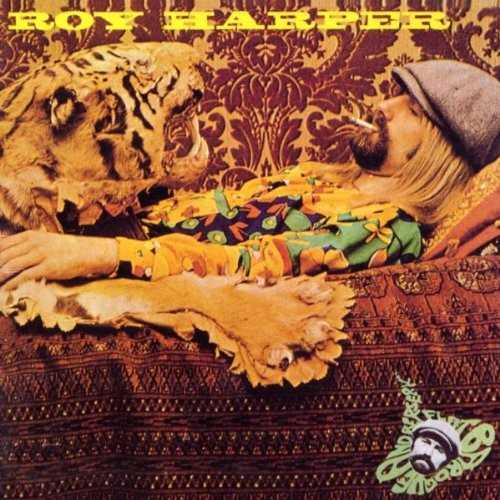 | Album: 3 of 25 Title: Flat Baroque and Berserk Released: 1970 Tracks: 12 Duration: 54:34 Scroll: Up Down Top Bottom 25% 50% 75% Spotify Allmusic Wikipedia AlbumCover | 1 Dont You Grieve (05:43) 2 I Hate the White Man (08:04) 3 Feeling All the Saturday (01:56) 4 How Does It Feel (06:29) 5 Goodbye (05:42) 6 Another Day (02:57) 7 Davey (01:30) 8 East of the Sun (03:02) 9 Tom Tiddlers Ground (06:08) 10 Francesca (01:20) 11 Song of the Ages (03:52) 12 Hells Angels (07:46) |
| Flat Baroque and Berserk : Allmusic album Review : Roy Harpers fourth album found him in an acoustic folkie mode more often than not, though as usual (for circa late-60s Harper) there were detours into pretty rocky items on occasion. Its not much of either a progression or a slide from the lyrically convoluted, somewhat but not incredibly melodic path he had established with his prior work. "I Hate the White Man," however, is certainly one of his most notable (and notorious) compositions, a spew of lilting verbiage thats hard to peg. It could be irony, it could be ironic self-hatred, it could be muddled reflections on the chaos that is the modern world, or it could be a combination of all of them. There are gentler items, sometimes with subdued harmony vocals and orchestration, that sound rather like Harpers most acerbic side sanded off with edges of Al Stewart, Donovan, or Tim Hardin; "Another Day" is the prettiest of those. The atypical "Hells Angels," on the other hand, has a twisted, chunky rock feel rather like the solo work of another of producer Peter Jenners clients, Syd Barrett. | ||
 | Album: 4 of 25 Title: Stormcock Released: 1971 Tracks: 4 Duration: 41:26 Scroll: Up Down Top Bottom 25% 50% 75% Spotify Allmusic Wikipedia AlbumCover | 1 Hors dOeuvres (08:37) 2 The Same Old Rock (12:24) 3 One Man Rock and Roll Band (07:23) 4 Me and My Woman (13:01) |
| Stormcock : Allmusic album Review : Roy Harper achieved some acclaim with releases like his debut, Sophisticated Beggar, and Flat Baroque and Berserk, but 1971s Stormcock was his first effort that was a fully realized success. Even though all four long songs on the record were arguably superior in subsequent live versions, this is one of only a handful of Harpers albums that has no weak cuts. "Hors dOeuvres" had been previewed two years earlier in a faster incarnation, but this version is pleasingly lethargic in a way much like Pink Floyds "Fearless." "The Same Old Rock" is an extended musical poem about the narrow-mindedness of organized religion and features several movements, including one of Jimmy Pages best solos, even though the notes list Page as S. Flavius Mercurius. After the strangely melodic "One Man Rock and Roll Band," the album ends with the grand "Me and My Woman." This version, while slower than the definitive live take from Flashes From the Archives of Oblivion, features lush orchestration by David Bedford. All four lyrics could stand on their own, showing Harpers vision to be much more profound than the typical stoned poet. His musicianship on acoustic guitar is revelatory, at once thoughtful and hard-edged. Stormcock, in fact, epitomized a hybrid genre that had no exclusive purveyors save Harper -- epic progressive acoustic. In this style, Harper amalgamated the best elements of associates Pink Floyd, Led Zeppelin, and folk artists like Bert Jansch into a winning stew of thought-provoking acoustic music. Harper dabbled in this style with mostly good results for the rest of his career, but never again would one of his albums exclusively have these type of songs on it. Stormcock represents a truly original vision comprised of oft-heard parts rarely assembled and therefore is on par with other heavyweights from the class of 1971 such as Led Zeppelin IV or Meddle. | ||
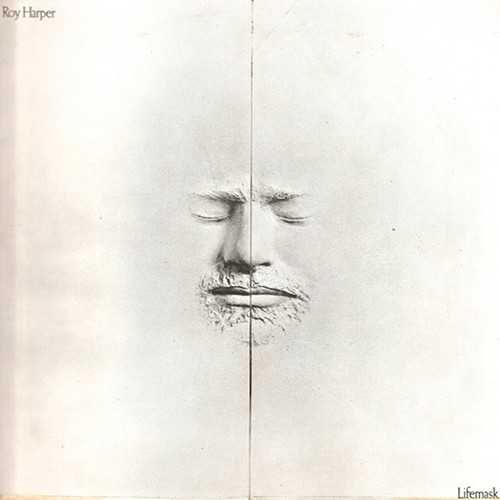 | Album: 5 of 25 Title: Lifemask Released: 1973 Tracks: 6 Duration: 43:41 Scroll: Up Down Top Bottom 25% 50% 75% Spotify Allmusic Wikipedia AlbumCover | 1 Highway Blues (06:32) 2 All Ireland (02:52) 3 Little Lady (04:17) 4 Bank of the Dead (03:10) 5 South Africa (04:04) 6 The Lords Prayer (22:46) |
| Lifemask : Allmusic album Review : Lifemask was an emotional if not musical rebirth for Roy Harper, who nearly lost his life in 1972 due to a rare congenital circulatory disorder. When the album was released in early 1973, it showed Harper refining the acoustic music he had perfected on 1971s Stormcock. Some of the songs on the album previously appeared in a motion picture entitled Made, but the sound is nonetheless consistent throughout. "Highway Blues" and "South Africa" are the best-known songs on this set, and have remained concert mainstays for many years. The former is a strong opener and added a touch of synthesizer to Harpers instrumental stable, while the latter was a political comment on apartheid in the guise of a touching love song. "Little Lady" and "Bank of the Dead" (featuring Jimmy Page) are fairly similar in sound and context, but remain pleasant, if not classic, cuts anyway. The album-closing "The Lords Prayer" is quite possibly the most confounding piece in Harpers catalog. It has all the benchmarks of one of his classics -- epic, album-side length, poetically obscure lyrics, many musical movements, and, as usual, guitar help from Jimmy Page. However, despite its potential, the songs a bit boring and doesnt approach Harpers former or future epics in terms of listenability. Despite that, Lifemask remains a strong album from Harpers progressive folk period, even if it is a notch below its predecessor, Stormcock. | ||
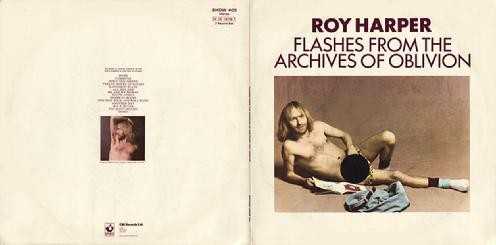 | Album: 6 of 25 Title: Flashes From the Archives of Oblivion Released: 1974 Tracks: 14 Duration: 1:24:50 Scroll: Up Down Top Bottom 25% 50% 75% Allmusic Wikipedia AlbumCover | 1 Home (03:04) 2 Commune (05:13) 3 Dont You Grieve (02:42) 4 Twelve Hours of Sunset (05:48) 5 Kangaroo Blues (03:22) 6 All Ireland (02:29) 7 Me and My Woman (12:23) 8 South Africa (05:01) 1 Highway Blues (15:46) 2 One Man Rock and Roll Band (07:24) 3 Another Day (04:01) 4 M.C.P. Blues (05:04) 5 Too Many Movies (06:28) 6 Home (06:01) |
| Flashes From the Archives of Oblivion : Allmusic album Review : By the time Flashes From the Archives of Oblivion was released in 1974, Roy Harper had already released seven albums and had even opened for Led Zeppelin during their ninth American tour. Nonetheless, Harper was still a virtual unknown in the States, and only a minor figure in England, albeit one with an impressive name-dropping list. While Flashes did not change Harpers obscurity, it did serve as an effective summation of his stunning live work. Numbers like "Commune," "Me and My Woman," and "South Africa" all highlight Harpers beautiful voice, poetic lyrics, and startling acoustic guitar technique. Jimmy Page plays slide guitar on "Male Chauvinist Pig Blues," which legend has it was recorded at Royal Albert Hall in 1973. The liner notes are not forthcoming as to the origin of the tracks, stating they were recorded at various concerts in England at one time or another. While this lack of information is mildly irritating, it does not diminish the effectiveness of the songs. The CD version of Flashes lacks three songs found on the LP, and is actually stronger because of it. Two of those songs were recorded on Valentines Day in 1974 and are rather sloppy, despite featuring Keith Moon and members of Led Zeppelin. The third song is a studio cut with Ian Anderson on flute. Completists can find these three tracks on the CD reissue of Valentine, where they arent quite as incongruous. Harpers next two efforts, HQ and Bullinamingvase, included working bands and were much more rock-oriented than his solo efforts. But as an introduction to Harpers acoustic era, Flashes From the Archives of Oblivion is an ideal choice. | ||
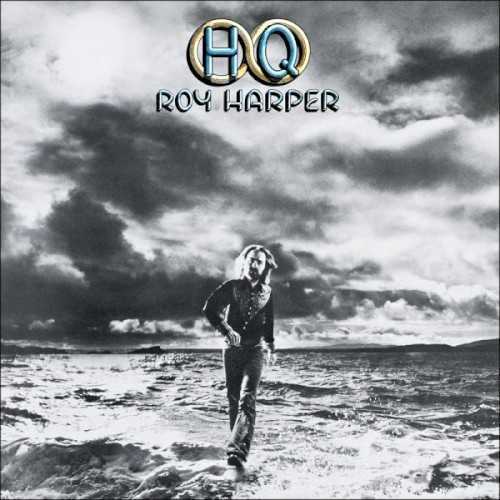 | Album: 7 of 25 Title: HQ Released: 1975 Tracks: 10 Duration: 1:01:00 Scroll: Up Down Top Bottom 25% 50% 75% Spotify Allmusic Wikipedia AlbumCover | 1 The Game (Parts 1-5) (13:42) 2 The Spirit Lives (04:14) 3 Grown Ups Are Just Silly Children (02:55) 4 Referendum (Legend) (03:49) 5 Forget Me Not (02:24) 6 Hallucinating Light (06:24) 7 When An Old Cricketer Leaves The Crease (07:28) 8 The Spirit Lives (early mix 23/3/75) (04:36) 9 When An Old Cricketer Leaves The Crease (1977-10-31: Exeter, UK) (07:51) 10 Hallucinating Light (7 single version) (07:32) |
| HQ : Allmusic album Review : Released in 1975 (and known in the U.S. as When an Old Cricketer Leaves the Crease), HQ was the eighth solo album from Roy Harper, and a high-water mark for him commercially and critically (as well as a personal favorite). Harper was already coming off two stellar efforts in Lifemask (1973) and Valentine (1974), which marked yet another artistic peak and his introduction to American audiences. Previous settings of acoustic guitar and orchestration were supplanted by Harpers formation of Trigger, a relatively straightforward hard rock trio anchored by ace guitarist Chris Spedding and former King Crimson/Yes drummer Bill Bruford. (The unit disbanded after this album, however.) Pink Floyd guitarist David Gilmour and Led Zeppelin bassist John Paul Jones are among the other all-star contributors on this album, which gets off to a rousing start with "The Game"s multi-part critique of modern society and features some hard-hitting guitar passages. "The Spirit Lives" upholds yet another long-running Harper theme of critiquing Christianity and its premises. "Hallucination Light" and "Forget Me Not" maintain the brooding romanticism associated with Harpers earlier work, but its the last track that should stick longest with listeners. Harpers understated, elegaic ode to lifes departures gains power from a blend of string and brass band lines; it remains one of his finest, most enduring compositions. Commercially, Harpers profile remains that of a cult artist, but he surely deserves wider recognition on his own merit. If you only know Harper as an associate of the 70s English rock aristocracy or the shadowy subject of Led Zeppelins "Hats off to Harper," make this album one of your first starting points. | ||
 | Album: 8 of 25 Title: Bullinamingvase Released: 1977 Tracks: 6 Duration: 41:52 Scroll: Up Down Top Bottom 25% 50% 75% Spotify Allmusic Wikipedia AlbumCover | 1 One of Those Days in England (03:27) 2 These Last Days (04:26) 3 Cherishing the Lonesome (05:56) 4 Naked Flame (05:08) 5 Watford Gap (03:24) 6 One of Those Days in England (Parts 2-10) (19:29) |
| Bullinamingvase : Allmusic album Review : Roy Harper followed HQ with another superb rock-oriented classic, 1977s interestingly titled Bullinamingvase. The album will forever be remembered for its controversial track "Watford Gap," with lyrics that supposedly defamed the service station of Watford Gap. Harper ran into legal problems when the station owners voiced their extreme distaste of the song, resulting in the record companys removal of the composition from the album. It was replaced with the light but solid "Breakfast with You." Both songs are included in the 1996 reissue. But the albums strengths lie elsewhere. The compositions are laced with beautiful passages, both musically and lyrically, and the vibrant acoustic guitar work on tracks like "Cherishing the Lonesome," "Naked Flame," and the epic "One of Those Days in England (Pts. 2-10)" are likely to never be surpassed. The powerful, energetic passion, brilliant lyrics, and driving force of "Cherishing the Lonesome" make for one of Harpers greatest accomplishments. "Naked Flame" impresses equally with its clean, country-tinged guitar work. The jewel in the crown, though, is "One of Those Days in England (Pts. 2-10)." The lyrical content, a collection of reminiscences, is striking, being at once trenchant/biting and beautiful. The piece is comprised of many movements, opening (with guitar) like a looming cloud foreshadowing the storm and darkness that lie ahead. Suddenly, after the introductory verses, the guitar picks up and the clouds begin breaking apart, allowing the sun to shine through. The song becomes hopeful before changing moods once again, with Harpers voice at its peak. The song benefits from wonderful use of lap steel guitar with strings fleshing out several movements. Bullinamingvase also contains the radio-friendly pop tune "One of Those Days in England," the closest Harper ever came to having a hit single. This is also the alternate title of the album. It is interesting to note that, even though most of the lyrical content is presented in the CD booklet, several lines/verses have been purposefully omitted from the printing, such as much of "Watford Gap" and the opening of "One of Those Days in England (Pts. 2-10)." Upon listening to the tunes, the reason becomes quite clear. Listen for uncredited vocal contributions from Paul and Linda McCartney. | ||
 | Album: 9 of 25 Title: Whatever Happened to Jugula? Released: 1985 Tracks: 8 Duration: 45:17 Scroll: Up Down Top Bottom 25% 50% 75% Wikipedia AlbumCover | 1 Nineteen Forty-Eightish (09:43) 2 Bad Speech (01:15) 3 Hope (04:29) 4 Hangman (07:07) 5 Elizabeth (06:37) 6 Frozen Moment (03:16) 7 Twentieth Century Man (04:25) 8 Advertisement (Another Intentional Irrelevant Suicide) (08:19) |
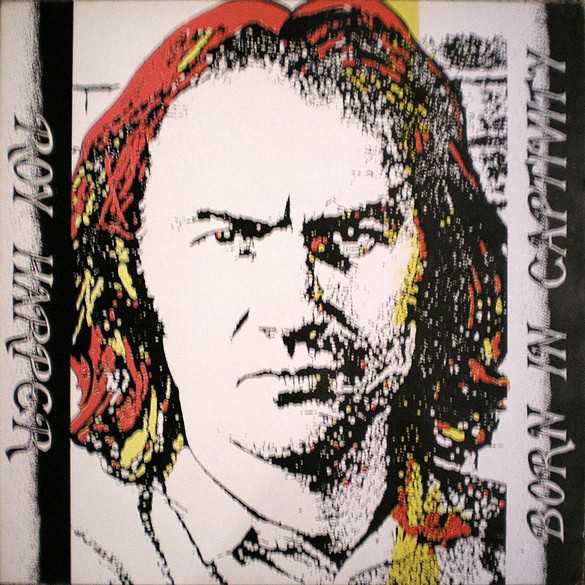 | Album: 10 of 25 Title: Born in Captivity Released: 1989 Tracks: 7 Duration: 46:50 Scroll: Up Down Top Bottom 25% 50% 75% Allmusic Wikipedia AlbumCover | 1 Stan (05:04) 2 Drawn to the Flames (04:41) 3 Come to Bed Eyes (04:19) 4 No Woman Is Safe (04:40) 5 I Am a Child (03:59) 6 Elizabeth (04:47) 7 Work of Heart (19:20) |
| Born in Captivity : Allmusic album Review : Heres an admirable example of creative recycling. After learning that fans preferred his rough tapes to their finished counterparts on Work of Heart (1985), Harper duly issued them on the short-lived Awareness label. The quality and format are pretty scrappy -- being just Harpers double-tracked vocals and guitar -- but hardcore fans wont care. "Ravedown" might be the best way of describing the mood here. "Elizabeth" should be the most familiar title; its pretty close to the track that graced Harpers album with Jimmy Page, Whatever Happened to Jugula? (1984). However, its sparkling melody shines through, even in this relatively stripped-down context. Elsewhere, songs like "No Woman Is Safe" maintained Harpers profile as a proud provocateur. The stripped-down "Work of Heart" fits into the Harper tradition of extended ruminations at the state of the world ("We Are the People") and distaste for Christianitys premises ("No One Ever Gets out Alive"). This albums obviously a minor entry in Harpers discography, but offers some worthwhile enough insight into his creative process. | ||
 | Album: 11 of 25 Title: Work of Heart Released: 1989 Tracks: 6 Duration: 45:02 Scroll: Up Down Top Bottom 25% 50% 75% Allmusic Wikipedia AlbumCover | 1 Drawn to the Flames (06:34) 2 Jack of Hearts (04:14) 3 I Am a Child (03:09) 4 Woman (04:43) 5 I Still Care (04:50) 6 Work of Heart (21:32) |
| Work of Heart : Allmusic album Review : The years between the excellent Bullinamingvase in 1977 and the underrated Whatever Happened to Jugula? in 1985 were artistically unkind to Roy Harper. Work of Heart was released in 1982, and is typical of this over-produced era. The technological overkill apparent on the album would be more forgivable if the songwriting was strong. But except for "Jack of Hearts," nothing really impresses on this set, including the epic-length title track. For those interested in completing their Harper collection, Science Friction reissued Work of Heart in 1994 with Born in Captivity, which included the same songs in demo form. Casual fans should stick with earlier albums, such as Stormcock or HQ, for a more representative look at Harpers ability. | ||
 | Album: 12 of 25 Title: Burn the World Released: 1990 Tracks: 2 Duration: 39:00 Scroll: Up Down Top Bottom 25% 50% 75% Allmusic AlbumCover | 1 Burn the World: Studio (19:09) 2 Burn the World: Live (19:51) |
| Burn the World : Allmusic album Review : Harpers Burn the World consists of two versions of the title track, one studio, the other live (recorded at the Bloomsbury Theatre, London). Written in 1984-85, this poetic composition is comprised of several distinct movements and timely lyrics. The studio cut is the original demo Harper presented to EMI records; they rejected it, stating it lacked commercial appeal. It includes a brief but attractive guitar solo by the "Unknown Space Cadet," also known as Dave Gilmour. The live track, a solo performance that Roy terms the "more cultured" version, has an immediacy and vibrancy not found in the demo. Energetic and driving (so much so that he breaks a string during the song), Harpers guitar work and vocals are superior to the studio take. Jacqui Turner, Roys companion of nine years, engineered the album. Their relationship ended the following year, when Awareness Records picked up the recordings (and Harper). Before folding, the label released several of his albums, including the superb Once (1990) and Death or Glory? (1992). | ||
 | Album: 13 of 25 Title: Once Released: 1990 Tracks: 10 Duration: 41:40 Scroll: Up Down Top Bottom 25% 50% 75% Allmusic Wikipedia AlbumCover | 1 Once (08:11) 2 Once in the Middle of Nowhere (00:57) 3 Nowhere to Run To (04:54) 4 The Black Cloud of Islam (03:00) 5 If (03:19) 6 Winds of Change (01:29) 7 Berliners (07:18) 8 Sleeping at the Wheel (04:17) 9 For Longer Than It Takes (04:19) 10 Ghost Dance (03:52) |
| Once : Allmusic album Review : After a disappointing decade of flawed releases, Roy Harper began the 90s on a strong note with the resurgent Once, an album very reminiscent in tone of Harpers 1980 effort, The Unknown Soldier. Despite the similarity, Once is the far superior album due to Harpers effort to downplay production in lieu of musicianship. Many of the lyrics deal with the impact of the fall of communism, which had taken place as Harper recorded the album. Most seem heavy-handed, though, except for the touching poetry of "Berliners," a song which features David Gilmour on guitar. "The Black Cloud of Islam" deals with a completely different issue, and drew fire from critics for its attacks on organized religion. Harpers next album, Death or Glory?, with its more personal imagery, is the one to get for those wanting the best from this era, but Once isnt far behind. | ||
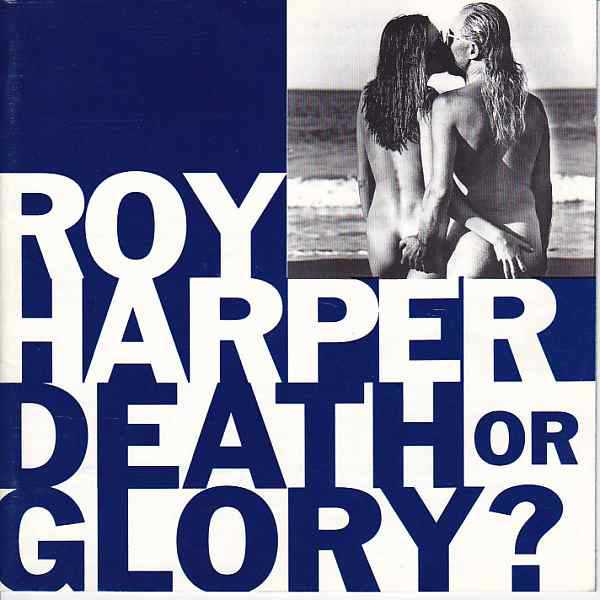 | Album: 14 of 25 Title: Death or Glory? Released: 1992 Tracks: 16 Duration: 1:03:41 Scroll: Up Down Top Bottom 25% 50% 75% Allmusic Wikipedia AlbumCover | 1 Death or Glory? (05:05) 2 The War Came Home Tonight (04:20) 3 Duty (01:27) 4 Waiting for Godot Part Zed (03:30) 5 Next to Me (03:15) 6 Man Kind (01:01) 7 The Tallest Tree (04:51) 8 Miles Remains (08:52) 9 The Fourth World (07:22) 10 Why? (00:44) 11 Evening Star (06:04) 12 Cardboard City (03:24) 13 One More Tomorrow (05:20) 14 The Plough (02:16) 15 On Summer Day (05:39) 16 If I Can (00:23) |
| Death or Glory? : Allmusic album Review : Roy Harper was spurred into making one of his best albums only after his wife abruptly left him in 1992, thrusting him into a deep despair. The rawness of Death or Glory?, and the fact that it was conceived after the bitter dissolution of a decade-long relationship, makes it the emotional, if not artistic, heir of John Lennon/Plastic Ono Band. The album shuns Harpers penchant for over-production in lieu of his more traditional acoustic sound. "The Tallest Tree" is a winning tribute to Chico Mendes with spiraling guitar work by Nick Harper. Harper is also positive in the winsome "Evening Star," which finds him finally recreating his classic early-70s sound. Harper wrote the song for Robert Plants daughter on her wedding, and even nicked the first line of "Stairway to Heaven" as a wink to his old mate from Led Zeppelin. Perhaps the albums finest moment is the mostly instrumental tribute to Miles Davis, "Miles Remains," which is not jazzy, but sounds instead like a more guitar-oriented Clannad. But the majority of the album is very pensive and bleak, including the bizarre, weepy spoken word piece that ends the record. The album was remixed in 1999 when Harper deleted some of the more gratuitous pieces in an attempt to make the album less depressing. In any form, Death or Glory? remains one of Harpers most satisfying works, and is his only release from the 90s that most casual fans will want to own. | ||
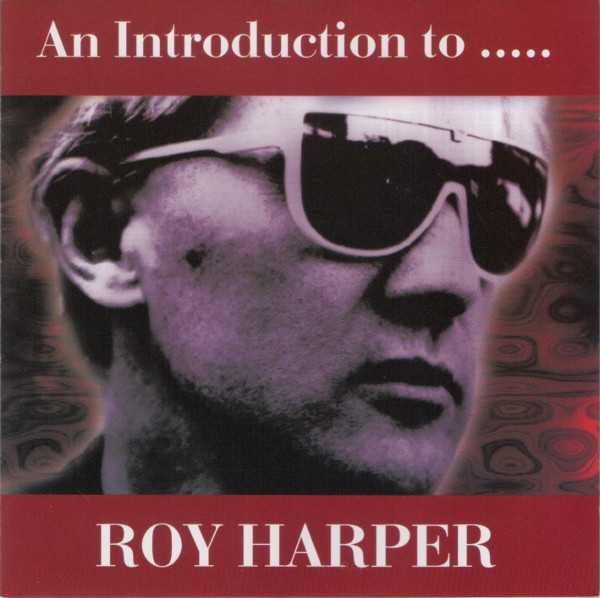 | Album: 15 of 25 Title: An Introduction to... Released: 1994 Tracks: 13 Duration: 1:12:02 Scroll: Up Down Top Bottom 25% 50% 75% Wikipedia AlbumCover | 1 Legend (03:46) 2 Shes the One (06:55) 3 Tom Tiddlers Ground (06:50) 4 Highway Blues (06:32) 5 Che (03:03) 6 Hallucinating Light (06:24) 7 One of Those Days in England (03:27) 8 You (04:34) 9 Nineteen Forty-Eightish (09:44) 10 Pinches of Salt (03:07) 11 Ghost Dance (03:52) 12 The Tallest Tree (04:51) 13 Miles Remains (08:52) |
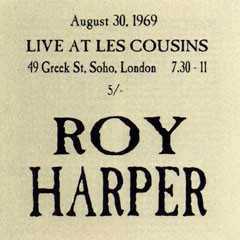 | Album: 16 of 25 Title: Live at Les Cousins Released: 1996-05-09 Tracks: 16 Duration: 2:01:13 Scroll: Up Down Top Bottom 25% 50% 75% Allmusic AlbumCover | 1 You Dont Need Money (06:22) 2 North Country (08:06) 3 Hors DOeuvres (06:17) 4 Blackpool (06:37) 5 Shes the One (1) (02:24) 6 Shes the One (2) (08:19) 7 Goldfish (05:11) 8 East of the Sun (12:18) 1 McGoohans Blues (19:48) 2 Feeling All the Saturday (03:08) 3 Zengem (01:20) 4 Che (06:28) 5 Davey (08:53) 6 I Hate the White Man (10:38) 7 Goodbye (10:32) 8 Tom Tiddlers Ground (edit) (04:46) |
| Live at Les Cousins : Allmusic album Review : This tape sat in the vaults for years before it was officially released in 1996. The fact that it is so revelatory makes its unearthing all the more rewarding. This is the almost complete gig from an August of 1969 show that finds Roy Harper coming out of his Jansch-inspired, neo-Dylan period into his more progressive, acoustic one. At this stage, Harper had a flawless falsetto, which complemented his ever-increasing guitar acumen quite nicely. Both are put to good use on an early (and much faster) prototype for "Hors DOeuvres," a song which eventually showed up on 1971s Stormcock. Perhaps the best song is "McGoohans Blues," a 19-minute epic which lacks the clumsy band arrangement that marred the album version. Harper and crowd seem in a mood (and mindset) typical for the period, and he even mentions that a certain James Page (whom he recently met) had shown an interest in learning his instrumental, "Blackpool." Harper then plays a seemingly perfect version of the song to restrained applause, only to chastise himself for mucking it up. This release shows Harper to be as talented as anyone from that period. It should be regarded as his only essential release, save possibly for his debut, from that era. | ||
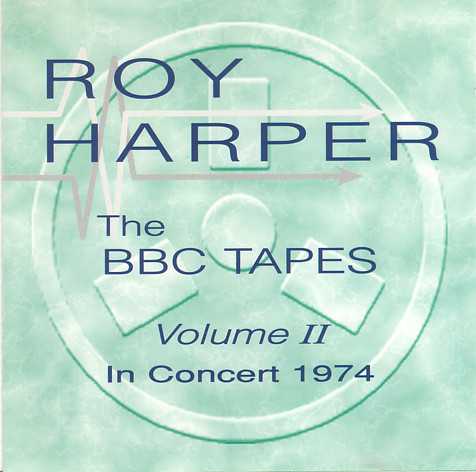 | Album: 17 of 25 Title: The BBC Tapes, Volume II: In Concert 1974 Released: 1997 Tracks: 11 Duration: 58:56 Scroll: Up Down Top Bottom 25% 50% 75% AlbumCover | 1 Hors DOeuvres (06:28) 2 Too Many Movies (05:43) 3 Male Chauvinist Pig Blues (04:13) 4 Forever (04:16) 5 South Africa (03:57) 6 Highway Blues (08:18) 7 Ill See You Again (05:06) 8 Commune (05:39) 9 Another Day (04:23) 10 North Country (04:03) 11 Twelve Hours of Sunset (06:50) |
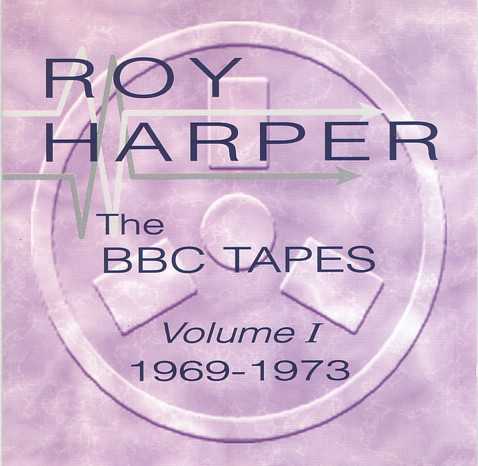 | Album: 18 of 25 Title: The BBC Tapes, Volume I: 1969-1973 Released: 1997 Tracks: 14 Duration: 1:18:21 Scroll: Up Down Top Bottom 25% 50% 75% AlbumCover | 1 Francesca (01:27) 2 Hells Angels (04:29) 3 Shes the One (04:45) 4 I Hate the White Man (08:08) 5 Its Tomorrow and Today Is Yesterday (04:05) 6 Dont You Grieve (02:25) 7 I Hate the White Man (05:52) 8 North Country (03:55) 9 Forever (02:58) 10 Twelve Hours of Sunset (04:43) 11 South Africa (04:00) 12 Little Lady (04:14) 13 All Ireland (02:58) 14 Hors DOeuvres, One Man Rock and Roll Band, Same Old Rock, Kangaroo Blues (24:16) |
 | Album: 19 of 25 Title: The Dream Society Released: 1998 Tracks: 11 Duration: 1:12:59 Scroll: Up Down Top Bottom 25% 50% 75% Allmusic Wikipedia AlbumCover | 1 Songs of Love (07:00) 2 Songs of Love, Part 2 (04:50) 3 Dancing All the Night (06:12) 4 Psychopath (02:45) 5 I Want to Be in Love (05:59) 6 Drugs for Everybody (05:05) 7 Come the Revolution (06:10) 8 Angel of the Night (05:11) 9 The Dream Society (08:36) 10 Broken Wing (06:43) 11 These Fifty Years (14:28) |
| The Dream Society : Allmusic album Review : The Dream Society continued Roy Harpers winning streak with an impressively produced album of varied material. The opening "Songs of Love" is a striking duet with vocalist Musumi that also features some great acoustic guitar work from son Nick Harper. "Songs of Love, Pt. 2" quickly follows with a hard rock sound as convincing as any Harper has produced since HQ in 1975. While there are many styles on the album -- hard rock, folk-rock, and even country -- perhaps the acoustic ballad "Broken Wing" is the records best cut. The album-closing epic "These Fifty Years" is one of Harpers most ambitious tracks. With several movements and some very progressive sections, it sounds a bit like Jethro Tull, a notion no doubt aided by a familiar flute sound courtesy of Ian Anderson. Although the song isnt as memorable as "The Same Old Rock" or "Me and My Woman," Harper must be given credit for a mostly successful attempt at a longer piece. As usual, the lyrics throughout are almost purposefully ponderous, a matter not allayed by the rambling liner notes. While Death or Glory? displayed greater highs and Once showed a new musical maturity, The Dream Society is more consistent and completes Harpers utterly successful trilogy of studio albums from the 90s. | ||
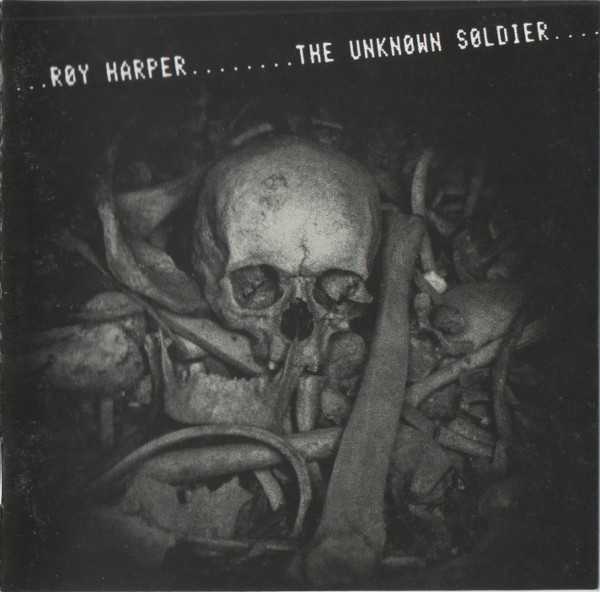 | Album: 20 of 25 Title: The Unknown Soldier Released: 1999 Tracks: 10 Duration: 42:05 Scroll: Up Down Top Bottom 25% 50% 75% Allmusic Wikipedia AlbumCover | 1 Playing Games (03:12) 2 Im in Love With You (03:45) 3 The Fly Catcher (04:10) 4 You (The Game, Part II) (04:37) 5 Old Faces (04:09) 6 Short and Sweet (06:28) 7 First Thing in the Morning (03:40) 8 The Unknown Soldier (03:34) 9 Ten Years Ago (03:35) 10 True Story (04:50) |
| The Unknown Soldier : Allmusic album Review : Released in 1980, The Unknown Soldier initiated an unsettling trend in Harpers career whereby over-production and unfocused songwriting became commonplace. Since that time, great Harper albums have been the exception rather than the rule, although every release does have at least a few good songs. The best song on this effort is "You," which benefits from the considerable talents of David Gilmour and Kate Bush. "Short and Sweet" is also good and was co-authored by David Gilmour, who released a similar take of the song on his solo debut, David Gilmour, in 1978. But not even the all-star cameos can completely save the day on this album, for most of the other cuts are mired in synth noodlings and inorganic sounds. The title track briefly reverts to Harpers simple yet strong acoustic approach, yet fails to completely convince due to the surrounding songs. Harpers output continued to be erratic for most of the 80s, with his Jugula album being the lone bright spot. There are many places to start investigating Harpers brilliant work, but The Unknown Soldier is not among them. | ||
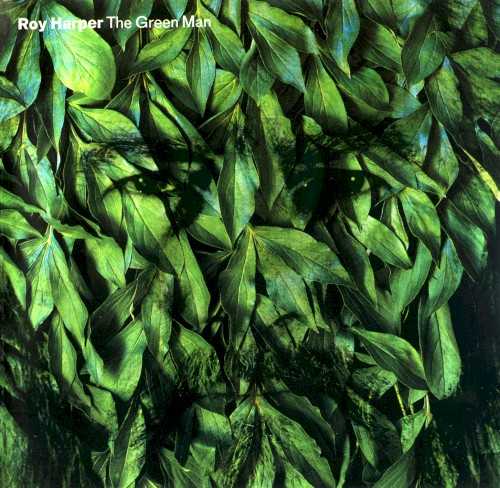 | Album: 21 of 25 Title: The Green Man Released: 2000 Tracks: 11 Duration: 1:00:02 Scroll: Up Down Top Bottom 25% 50% 75% Allmusic Wikipedia AlbumCover | 1 The Green Man (05:35) 2 Wishing Well (05:53) 3 Sexy Woman (06:30) 4 The Apology (02:58) 5 Midnight Sun (04:22) 6 Glasto (04:24) 7 The Monster (08:22) 8 New England (04:42) 9 Solar Wind Scuptures (03:36) 10 Rushing Camelot (08:46) 11 All in All (04:50) |
| The Green Man : Allmusic album Review : Following the somewhat disappointing The Dream Society, the astounding British singer/songwriter delivers his best album since 1974s Stormcock and gets his muse back on track. Always an extraordinary guitarist, his songs are still developed out of the folk techniques of his early albums and his lyrics are still as sublimely poetic and soaring. His beautiful voice hasnt sounded so impassioned since his great trilogy of albums: Flat Baroque and Berserk, Come out Fighting Ghengis Smith, and the aforementioned masterpiece Stormcock. For this session, Harper went into the studio alone and wrote, engineered, and mixed the entire collection himself. Its evident that the isolation brought his more introspective, deeply personal elements out in the songs. Here we have the Roy Harper who explored intimate love songs and literate themes on "Another Day" from Flat Baroque and Berserk and delicate folk simplicity on the album Valentine. Gone is the railing angst of "I Hate the White Man" or the hard rock of an album like When an Old Cricketer Leaves the Crease. Green Man is entirely acoustic, with the exception of Johnny Fitzs Fender Rhodes cameo on "The Monster"; subsequently, Harper sounds more comfortable not fighting with a rhythm section, adding Jeff Martins mandolin on "Sexy Woman." "Midnight Sun," "Solar Wind Sculptures," and "The Green Man" are outstanding pieces of work -- highlights that make the album yet another utterly inexhaustible album in the legacy of one of the U.K.s most admired songwriters. | ||
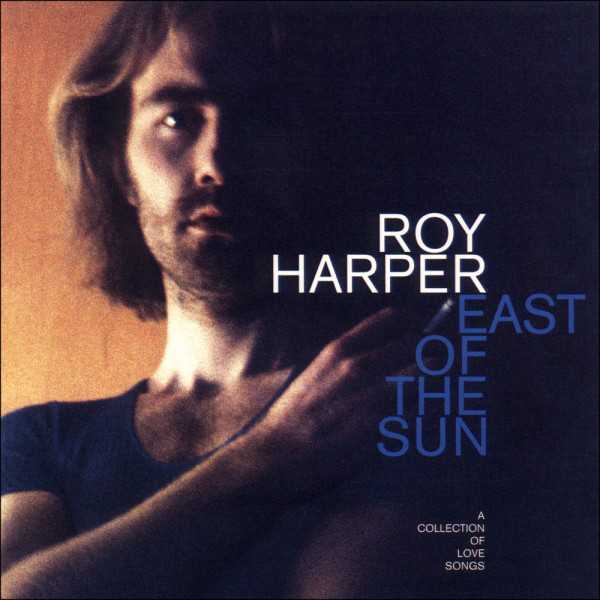 | Album: 22 of 25 Title: East of the Sun Released: 2001 Tracks: 15 Duration: 57:19 Scroll: Up Down Top Bottom 25% 50% 75% Wikipedia AlbumCover | 1 Ill See You Again (05:00) 2 Francesca (01:20) 3 Another Day (02:59) 4 North Country (03:28) 5 South Africa (04:04) 6 The Flycatcher (04:08) 7 My Friend (03:42) 8 East of the Sun (03:04) 9 Commune (04:34) 10 Davey (01:31) 11 Twelve Hours of Sunset (04:45) 12 Hallucinating Light (06:04) 13 Forever (02:48) 14 Sexy Woman (06:28) 15 Frozen Moment (03:19) |
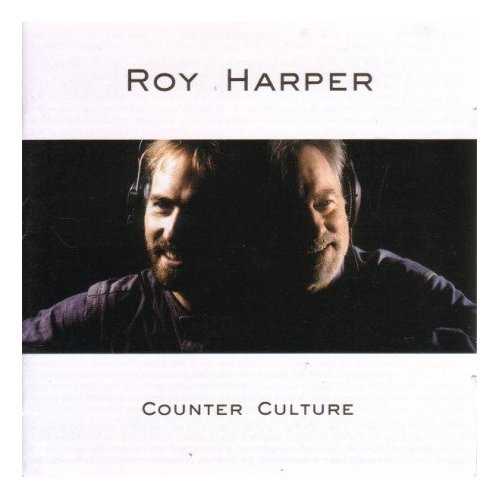 | Album: 23 of 25 Title: Counter Culture Released: 2005 Tracks: 25 Duration: 2:29:58 Scroll: Up Down Top Bottom 25% 50% 75% Allmusic Wikipedia AlbumCover | 1 Sophisticated Beggar (05:07) 2 You Don’t Need Money (02:26) 3 Francesca (01:20) 4 I Hate the White Man (08:04) 5 Another Day (04:01) 6 The Same Old Rock (12:24) 7 Me and My Woman (13:01) 8 South Africa (04:04) 9 Ill See You Again (04:58) 10 Twelve Hours of Sunset (04:49) 11 Forget Me Not (02:24) 12 Hallucinating Light (06:24) 13 When an Old Cricketer Leaves the Crease (07:13) 1 One of Those Days in England, Parts 2-10 (19:13) 2 These Last Days (04:26) 3 Cherishing the Lonesome (05:56) 4 The Flycatcher (04:08) 5 You (04:37) 6 Frozen Moment (03:16) 7 Pinches of Salt (03:07) 8 Miles Remains (08:52) 9 Evening Star (06:04) 10 I Want to Be in Love (05:59) 11 The Green Man (05:31) 12 Blackpool (extract) (02:25) |
 | Album: 24 of 25 Title: Songs of Love and Loss Released: 2011-09-19 Tracks: 23 Duration: 1:33:33 Scroll: Up Down Top Bottom 25% 50% 75% Allmusic Wikipedia AlbumCover | 1 Black Clouds (04:30) 2 Girlie (03:00) 3 All You Need Is (05:46) 4 Francesca (01:20) 5 East of the Sun (03:03) 6 Little Lady (04:19) 7 North Country (03:28) 8 Ill See You Again (05:01) 9 Naked Flame (05:08) 10 Commune (04:34) 11 Frozen Moment (03:29) 1 Davey (01:31) 2 Another Day (02:59) 3 South Africa (04:04) 4 Hallucinating Light (06:00) 5 Sleeping at the Wheel (04:19) 6 Waiting for Godot (03:34) 7 The Flycatcher (04:09) 8 On Summer Day (05:38) 9 Cherishing the Lonesome (05:56) 10 My Friend (03:23) 11 One More Tomorrow (05:21) 12 Forever (02:51) |
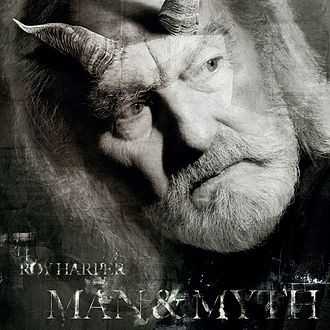 | Album: 25 of 25 Title: Man & Myth Released: 2013-09-20 Tracks: 7 Duration: 51:31 Scroll: Up Down Top Bottom 25% 50% 75% Allmusic Wikipedia AlbumCover | 1 The Enemy (07:34) 2 Time Is Temporary (04:56) 3 January Man (04:31) 4 The Stranger (05:26) 5 Cloud Cuckooland (05:43) 6 Heaven Is Here (15:24) 7 The Exile (07:55) |
| Man & Myth : Allmusic album Review : Roy Harper, loved as he is by everyone from Page & Plant and Kate Bush to Joanna Newsom and Jonathan Wilson, has always existed as a shadow in the hallway of the music business, rather than a presence than its living room. Hes also been misunderstood by critics more often than not. He is a poet who happens to play a very decent guitar and write fine melodies. His lyrics have never concerned themselves with fashionable topics. They have been as rooted in the past -- the historical as well as his own -- as they are in his perceived present. Man & Myth is his first new studio album since 2000s The Green Man. It was recorded in California with Wilson and in Ireland with the venerable John Fitzgerald, both of whom play on these well-populated recordings, as well. Composed of seven new songs, this is Harper, aged 72, in pristine voice, his trademark off-meter phrasing intact. Throughout, he makes no attempt to change anything about what he does. The sounds remain rooted in 1967’s Sophisticated Beggar, yet move toward another frontier, albeit with elegant arrangements and crisp yet warm production. His voice and guitar are consistently atop a slew of other instruments, including Pete Townshends guitar on two tracks. Harpers writing remains keen and opulent, his loopy phrasing and lyrics lie in their own country; they exist outside of the usual singer/songwriter tropes. Opener "The Enemy" is sparse in its charts, but rich in metaphors and metamorphoses as it details the fading notion of romanticism in the post-World War II era in the British Isles. “January Man” looks back at lost love as if it were an inevitability, as its protagonist seeks shelter inside its memory, yet is too smart to believe there is one. Adorned by strings and brass, it’s Harper at his most graceful and vulnerable. “Cloud Cuckooland” is a rocker buoyed by Townshend’s lead guitar (the most aggressive hes played in decades), rolling snares, and Harpers cleverly and scathingly satirizing citing the 21st century’s embrace of corporate culture even as it ushers in its nadir and death. “Heaven Is Here” is the set’s masterpiece. Clocking in at nearly 16 minutes, it’s his look through the history of myth as a snapshot of the present. It’s simultaneously elegiac, romantic, literary, and elliptical as it moves through a visionary dream -- one equally inhabited by the spirits of Dante, Virgil, Milton, and Yeats. His melismatic phrasing is as musical as the gorgeous strings, guitars, drums, and mellotrons in the sonic architecture framing his voice. Man & Myth is Harper at his best, fully in command of his vision, his curious, lovely melodic sensibility, and, of course, his poetry. | ||